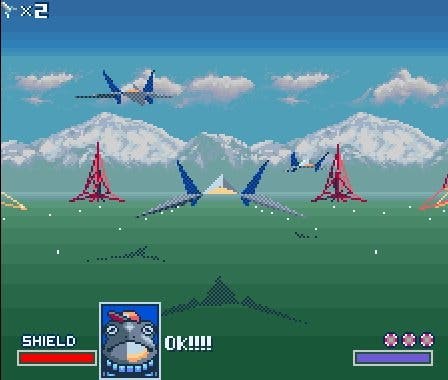The life and times of Dylan Cuthbert
The Q-Games boss on infiltrating Nintendo EAD, jumping ship to Sony and going solo with PixelJunk.
Next time you feel good about the sum achievements of your life to date, you'd do well to peruse the resumé of Q-Games founder Dylan Cuthbert for a quick reality check.
Since starting out as a fresh faced young programmer at British studio Argonaut back in 1989, he co-developed classic SNES shooter StarFox while still in short trousers, became one of the few Westerners ever to infiltrate the ranks of Nintendo's elite EAD internal studio, jumped ship to Sony to help develop the PlayStation 2 and then, in 2001 set up his own studio, Kyoto-based Q-Games.
In the same month as the revered PixelJunk developer celebrates both its 10th anniversary and the release of its excellent Star Fox 64 3DS remake, we sat down with the amiable 39-year-old emigré at the Tokyo Game Show to discuss where he's been, where he's going and how he plans to get there.
Cuthbert was just 18 when he was flown to Japan to show Nintendo the 3D Game Boy engine he had been working on at Argonaut. One thing led to another, and before he knew it he'd upped sticks to Kyoto and was programming Game Boy tank battler X with Metroid creator Yoshio Sakamoto and Miyamoto's groundbreaking SNES shooter Star Fox within the hallowed walls of EAD.
"I found it really eye-opening," he remembers.
"I came from the English games industry which had no concept of game design whatsoever. The programmers made the games. I went to Nintendo and they had a dedicated director and assistant director on the team. There would be Miyamoto checking the game design, not a programmer.
"They had this way of making sure a title had all its elements in place across the span of the game. You'd have an ending that was just as thrilling as the opening of the game, which a lot of games didn't have, especially in Britain.
"Your average Amiga game would have a great start or a great premise, and then either the difficulty level would just go through the roof so you couldn't get to the end, or you'd get to the end and it would just fizzle out."

Given the stature of his new colleagues, his shaky grasp of the language and the fact that he was still barely old enough to order a jug of sake, you'd imagine he might have had trouble fitting into his intimidating new surroundings.
"No, not at all," he insists. "It was hard work but in a fun way. It was like a perfect learning experience of how things can be made really well."
And Cuthbert duly thrived, impressing his new taskmasters, not least of all Miyamoto himself. In a recent Iwata Asks interview, the legendary Nintendo creator remembers being impressed at just how well the young developer took to the task at hand.
"I was surprised that he could handle programming at that age - that he could work a regular job when so young. I thought, 'Oh, so that's what kind of world this industry is.' The first thing I thought when I met Dylan-san was that this isn't a field in which you can get puffed up simply by being older."
Wranglings over a non-compete clause in his contract with Argonaut unfortunately meant that, unlike his colleague Giles Goddard (who most recently made 3DS launch title Steel Diver for the platform holder), he was unable to take up a full time position in Kyoto. But rather than heading back to England, he instead got on a plane to California to work at Sony.
Cuthbert remembers his stint at Sony, where he was lead designer on colourful PS1 shooter Blasto, as a "friendly time" but a very different experience to what he'd seen in Kyoto.
"Sony was much more American," he explains.
"It was enjoyable but it was a different lifestyle. It had a very corporate feel, whereas Nintendo was more like a family - a family-run company. That was the big difference. At Sony you felt a corporate entity around you at all times. Whereas at Nintendo it was like Miyamoto-san was your dad and [former CEO] Yamauchi-san was your grandad."

